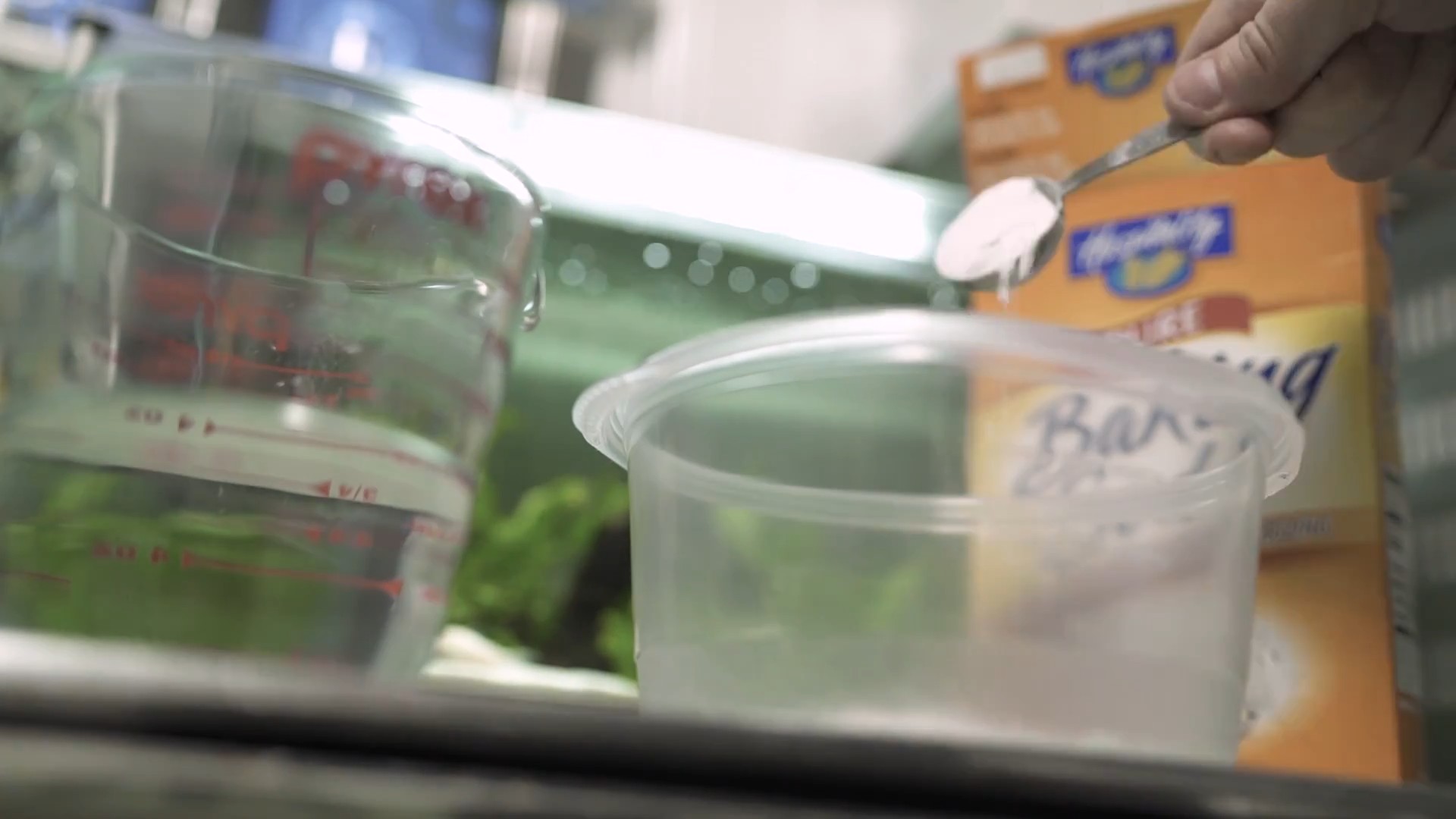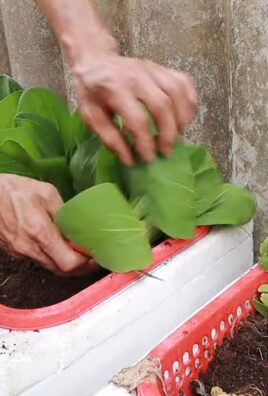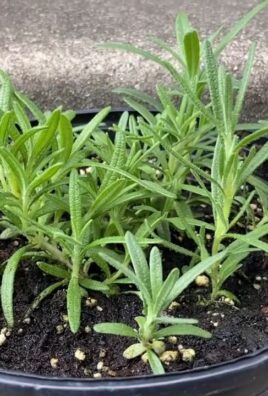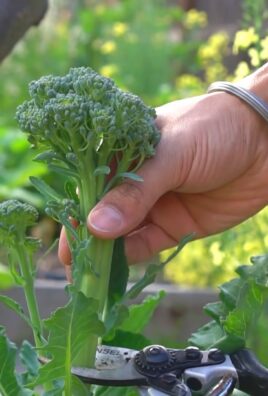Growing Bush Beans in Containers is easier than you might think! Imagine stepping onto your balcony or into your small backyard and harvesting fresh, crisp bush beans, ready to be tossed into a salad or steamed for a delicious side dish. No sprawling garden needed! For centuries, container gardening has allowed people, especially those in urban environments, to connect with nature and cultivate their own food. From the hanging gardens of Babylon to the window boxes of Parisian apartments, the desire to grow things in limited spaces is deeply rooted in human history.
But why should you consider growing bush beans in containers? Well, maybe you’re short on space, or perhaps you want to protect your plants from pests and diseases that plague in-ground gardens. Or maybe, like me, you just love the convenience of having fresh produce right at your fingertips! Whatever your reason, this DIY guide will equip you with all the knowledge and simple tricks you need to successfully grow a bountiful harvest of bush beans, even if you’ve never gardened before. I’ll walk you through everything from choosing the right container and soil to providing the perfect amount of sunlight and water. Get ready to enjoy the satisfaction of nurturing your own little bean patch and savoring the delicious rewards!

Growing Bush Beans in Containers: A Beginner’s Guide
Hey there, fellow gardening enthusiasts! I’m so excited to share my experience with growing bush beans in containers. It’s a fantastic way to enjoy fresh, homegrown beans even if you don’t have a sprawling backyard. Trust me, it’s easier than you think, and the reward of snapping those crisp, delicious beans right off the plant is totally worth it. Let’s dive in!
Choosing the Right Bush Bean Variety
First things first, you need to pick the right bush bean variety. Unlike pole beans that climb, bush beans stay compact, making them perfect for containers. Here are a few of my favorites:
- Blue Lake Bush: A classic choice, known for its high yields and excellent flavor.
- Contender: An early producer, great if you’re impatient like me!
- Provider: Another reliable variety that’s resistant to common bean diseases.
- Roma II: Produces flat, Italian-style beans that are delicious in salads or cooked dishes.
- Derby: A stringless variety, which means less work for you!
Gathering Your Supplies
Okay, now let’s get our hands dirty! Here’s what you’ll need to get started:
- Containers: Choose containers that are at least 12 inches in diameter and 12 inches deep. This gives the roots plenty of room to grow. I prefer using plastic or resin containers because they’re lightweight and hold moisture well.
- Potting Mix: Don’t use garden soil! It’s too heavy and doesn’t drain well in containers. Opt for a high-quality potting mix that’s specifically formulated for container gardening.
- Bush Bean Seeds: Of course! Make sure they’re fresh for the best germination rate.
- Watering Can or Hose: For keeping your beans hydrated.
- Fertilizer: A balanced, water-soluble fertilizer will help your beans thrive. Look for something like a 10-10-10 or 20-20-20 formula.
- Optional: A small trellis or stakes for extra support, although bush beans are generally self-supporting.
Planting Your Bush Beans
Alright, let’s get those seeds in the ground!
- Prepare the Containers: Fill your containers with potting mix, leaving about an inch or two of space at the top.
- Sow the Seeds: Plant the bean seeds about 1 inch deep and 2-3 inches apart. I usually plant 3-4 seeds per container, just to be safe.
- Water Gently: Water the soil thoroughly after planting, making sure it’s evenly moist but not soggy.
- Find a Sunny Spot: Bush beans need at least 6-8 hours of sunlight per day, so place your containers in a sunny location. A south-facing balcony or patio is ideal.
Caring for Your Bush Beans
Now comes the fun part – watching your beans grow! Here’s how to keep them happy and healthy:
- Watering: Water your beans regularly, especially during hot, dry weather. The soil should be consistently moist, but not waterlogged. I usually check the soil moisture by sticking my finger in it. If the top inch feels dry, it’s time to water.
- Fertilizing: Fertilize your beans every 2-3 weeks with a balanced, water-soluble fertilizer. Follow the instructions on the fertilizer package. I like to dilute the fertilizer a bit more than recommended to avoid burning the roots.
- Weeding: Keep an eye out for weeds and remove them promptly. Weeds can compete with your beans for nutrients and water.
- Pest Control: Bush beans can be susceptible to pests like aphids and bean beetles. Inspect your plants regularly and take action if you see any signs of infestation. You can try spraying them with insecticidal soap or neem oil. I’ve also had success with hand-picking the pests off the plants.
- Support (Optional): While bush beans are generally self-supporting, they can sometimes flop over if they get too heavy with beans. If you notice this happening, you can provide some extra support with a small trellis or stakes.
Harvesting Your Bush Beans
The moment you’ve been waiting for! Here’s how to harvest your beans:
- Timing: Bush beans are usually ready to harvest about 50-60 days after planting. The pods should be firm, plump, and snap easily off the plant.
- Harvesting Technique: Gently snap the bean pods off the plant, being careful not to damage the stems or leaves. Harvest regularly to encourage more bean production.
- Enjoy! Eat your beans fresh, or store them in the refrigerator for a few days. You can also freeze or can them for longer-term storage.
Troubleshooting Common Problems
Even with the best care, you might encounter a few problems along the way. Here are some common issues and how to deal with them:
Yellowing Leaves
This could be a sign of overwatering, underwatering, or nutrient deficiency. Check the soil moisture and adjust your watering accordingly. If the soil is consistently moist, you might be overwatering. If it’s dry, you need to water more often. You can also try fertilizing your beans to provide them with the nutrients they need.
Lack of Bean Production
This could be due to insufficient sunlight, poor pollination, or nutrient deficiency. Make sure your beans are getting at least 6-8 hours of sunlight per day. You can also try hand-pollinating the flowers by gently shaking the plants. And, of course, make sure you’re fertilizing your beans regularly.
Pest Infestations
As mentioned earlier, aphids and bean beetles are common pests of bush beans. Inspect your plants regularly and take action if you see any signs of infestation. Insecticidal soap and neem oil are effective treatments.
Disease
Bush beans can be susceptible to diseases like powdery mildew and bean rust. To prevent these diseases, make sure your plants have good air circulation and avoid overhead watering. If you see signs of disease, remove the affected leaves and spray the plants with a fungicide.
Tips for Success
Here are a few extra tips to help you grow the best bush beans possible:
- Succession Planting: Plant a new batch of seeds every 2-3 weeks to extend your harvest season.
- Soak Seeds Before Planting: Soaking the seeds in water for 24 hours before planting can help them germinate faster.
- Mulch: Add a layer of mulch around your plants to help retain moisture and suppress weeds.
- Rotate Crops: If you’re growing beans in the same containers year after year, rotate them with other crops to prevent soil depletion.
- Observe Your Plants: Pay attention to your plants and learn to recognize the signs of stress. The sooner you catch a problem, the easier it will be to fix.
Growing bush beans in containers is a rewarding experience that anyone can enjoy. With a little bit of care and attention, you can have a bountiful harvest of fresh, delicious beans right at your fingertips. Happy gardening!

Conclusion
So, there you have it! Growing bush beans in containers is not only achievable, but it’s also a remarkably rewarding experience. We’ve walked through the entire process, from selecting the right container and soil to nurturing your plants and harvesting your bountiful crop. But why should you dedicate your precious time and effort to this particular gardening endeavor?
Simply put, growing your own bush beans offers a level of freshness and flavor that you simply can’t replicate with store-bought varieties. Imagine stepping out onto your patio or balcony and picking crisp, tender beans just moments before adding them to your salad, stir-fry, or side dish. The taste difference is truly remarkable. Beyond the superior flavor, you also gain complete control over the growing process. You can choose organic methods, avoid harmful pesticides, and ensure that your beans are grown with the utmost care.
Furthermore, container gardening with bush beans is incredibly accessible, even if you have limited space. Whether you have a sprawling backyard or a tiny apartment balcony, you can successfully cultivate these compact and productive plants. It’s a fantastic way to connect with nature, learn new skills, and enjoy the satisfaction of harvesting your own food.
Ready to take your bean growing to the next level? Consider experimenting with different varieties of bush beans. Some popular choices include Blue Lake Bush, Contender, and Provider. Each variety offers a slightly different flavor and texture, so you can find the perfect bean to suit your taste. You can also try companion planting. Marigolds, for example, are known to deter bean beetles, while nasturtiums can attract aphids away from your bean plants.
Don’t be afraid to get creative with your container gardening setup. Use repurposed containers, build your own raised beds, or even create a vertical garden to maximize your space. The possibilities are endless!
We wholeheartedly encourage you to give growing bush beans in containers a try. It’s a fun, educational, and delicious experience that you won’t regret. And once you’ve harvested your first crop, be sure to share your success stories and tips with us! We’d love to hear about your experiences and see photos of your thriving bean plants. Let’s build a community of container gardening enthusiasts and inspire others to grow their own food.
Remember, even if you encounter challenges along the way, don’t give up! Gardening is a learning process, and every mistake is an opportunity to grow (pun intended!). With a little patience, persistence, and the information you’ve gained from this guide, you’ll be enjoying fresh, homegrown bush beans in no time. So, grab your seeds, your containers, and your gardening gloves, and let’s get started! Happy gardening!
Frequently Asked Questions (FAQ)
What is the best type of container to use for growing bush beans?
The ideal container for growing bush beans should be at least 12 inches in diameter and 12 inches deep. This provides enough space for the roots to develop properly. You can use plastic pots, terracotta pots, fabric pots, or even repurposed containers like buckets or tubs. Make sure the container has drainage holes to prevent waterlogging, which can lead to root rot. Fabric pots are particularly beneficial as they allow for excellent drainage and aeration of the soil.
What kind of soil should I use for growing bush beans in containers?
Bush beans thrive in well-draining, fertile soil. A good potting mix is essential. Avoid using garden soil directly in containers, as it can become compacted and doesn’t drain well. A mix of compost, peat moss (or coconut coir), and perlite or vermiculite is ideal. This combination provides the necessary nutrients, moisture retention, and drainage for healthy bean growth. You can also purchase pre-made potting mixes specifically formulated for vegetables.
How often should I water my bush bean plants in containers?
Watering frequency depends on the weather, the type of container, and the soil mix. Generally, you should water your bush bean plants when the top inch of soil feels dry to the touch. Water deeply until water drains out of the drainage holes. Avoid overwatering, as this can lead to root rot. During hot, dry weather, you may need to water daily. Check the soil moisture regularly and adjust your watering schedule accordingly.
Do bush beans need fertilizer when grown in containers?
Yes, bush beans benefit from regular fertilization, especially when grown in containers. Use a balanced fertilizer with an NPK ratio of 10-10-10 or 5-10-10. Apply the fertilizer according to the package instructions, usually every 2-3 weeks. You can also use organic fertilizers like compost tea or fish emulsion. Avoid over-fertilizing, as this can burn the roots and harm the plants.
How much sunlight do bush beans need?
Bush beans need at least 6-8 hours of direct sunlight per day to thrive. Choose a location for your containers that receives plenty of sunlight. If you live in a particularly hot climate, you may need to provide some afternoon shade to prevent the plants from overheating.
When is the best time to plant bush beans in containers?
Bush beans are warm-season crops and should be planted after the last frost. The soil temperature should be at least 60°F (15°C). You can start seeds indoors 2-3 weeks before the last frost and transplant them into containers once the weather warms up. Alternatively, you can direct sow seeds directly into the containers.
How long does it take for bush beans to mature and produce beans?
Bush beans typically mature and produce beans in 50-60 days from planting. The exact time will depend on the variety and growing conditions. You can start harvesting beans when they are about the size of your finger and still tender.
What are some common pests and diseases that affect bush beans?
Common pests that affect bush beans include aphids, bean beetles, and spider mites. Diseases include powdery mildew, rust, and bean mosaic virus. You can control pests by handpicking them off the plants, using insecticidal soap, or introducing beneficial insects like ladybugs. Prevent diseases by providing good air circulation, avoiding overwatering, and using disease-resistant varieties.
Can I grow bush beans indoors?
While it’s possible to grow bush beans indoors, it can be challenging. They require a lot of sunlight, which can be difficult to provide indoors. You’ll need to use grow lights to supplement natural light. Also, indoor conditions can be more prone to pests and diseases. If you choose to grow bush beans indoors, make sure to provide adequate light, ventilation, and humidity.
How do I harvest bush beans?
Harvest bush beans when the pods are firm, plump, and still tender. Snap the beans off the plant carefully, being careful not to damage the plant. Harvest regularly to encourage continued production. Overripe beans will become tough and stringy.




Leave a Comment